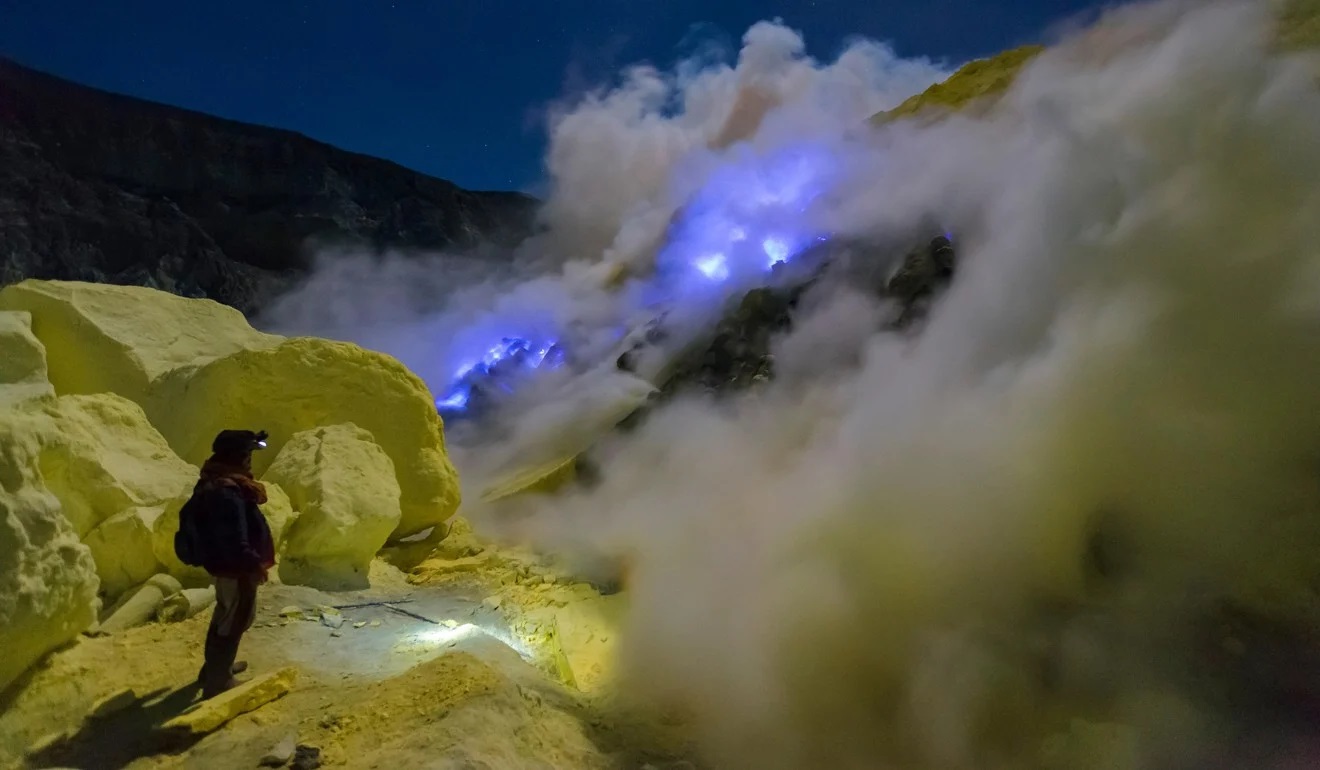Mysteries Of Blue Fire Crater And Sulphur Mines In Indonesia

Have you ever heard of a place where blue fire dances in the night and sulphur mines glow eerily? Welcome to the Blue Fire Crater in Indonesia, a natural wonder that seems straight out of a fantasy novel. Located in the Ijen volcano complex, this unique spot attracts adventurers and nature lovers from around the globe. The blue flames result from ignited sulphuric gases, creating a mesmerizing sight against the dark sky. During the day, miners work tirelessly in the sulphur mines, extracting bright yellow sulphur. This place offers a rare blend of natural beauty and human perseverance, making it a must-visit destination.
Mysteries of Blue Fire Crater and Sulphur Mines in Indonesia
Indonesia, a land of stunning landscapes and rich culture, hides some of the world's most intriguing natural wonders. Among these are the Blue Fire Crater and the Sulphur Mines. These places offer a unique blend of natural beauty and eerie phenomena.
The Enigmatic Blue Fire Crater
The Blue Fire Crater, located in the Ijen Volcano complex, is a sight to behold. This natural wonder is famous for its mesmerizing blue flames, which can be seen in the dark.
Ijen Volcano: The Ijen Volcano is home to the Blue Fire Crater. The blue flames are caused by the combustion of sulfuric gases that emerge from the cracks in the volcano. These gases ignite when they come into contact with the air, creating a stunning blue glow.
Kawah Ijen: Kawah Ijen is the crater lake within the Ijen Volcano. The lake is filled with turquoise water, which is highly acidic due to the sulfur content. The combination of the blue flames and the turquoise lake creates a surreal landscape.
Night Hikes: To witness the blue flames, visitors must embark on a night hike. The trek begins around midnight, and the flames are most visible in the early hours before dawn. The hike is challenging but rewarding, offering breathtaking views of the crater and the surrounding landscape.
The Fascinating Sulphur Mines
The Sulphur Mines in the Ijen Volcano complex are another highlight of this region. These mines are not only a source of sulfur but also a testament to the resilience of the miners who work there.
Sulphur Mining Process: The process of mining sulfur is labor-intensive and dangerous. Miners extract sulfur from the crater and carry heavy loads of the mineral down the mountain. The sulfur is then processed and used in various industries.
Miners' Lives: The miners who work in the Ijen Volcano complex lead challenging lives. They face harsh working conditions, including exposure to toxic gases and extreme physical labor. Despite these challenges, they continue to work in the mines to support their families.
Tourist Interaction: Visitors to the Ijen Volcano complex often have the opportunity to interact with the miners. These interactions provide a glimpse into the lives of the miners and the challenges they face. Many tourists find these encounters to be eye-opening and humbling.
The Unique Landscape of Ijen
The Ijen Volcano complex is not just about the Blue Fire Crater and the Sulphur Mines. The entire region is a treasure trove of natural beauty and unique landscapes.
Ijen Plateau: The Ijen Plateau is a highland area surrounding the volcano. It is characterized by lush greenery, coffee plantations, and scenic views. The plateau is a great place to relax and take in the natural beauty of the region.
Banyuwangi: Banyuwangi is the nearest town to the Ijen Volcano complex. It serves as a base for visitors exploring the region. The town itself has a rich cultural heritage and offers various attractions, including traditional dance performances and local cuisine.
Waterfalls and Hot Springs: The Ijen region is also home to several waterfalls and hot springs. These natural attractions provide a refreshing break from the strenuous hikes and offer a chance to relax and rejuvenate.
Practical Tips for Visiting Ijen
Visiting the Ijen Volcano complex requires some preparation. Here are a few practical tips to ensure a safe and enjoyable trip.
Best Time to Visit: The best time to visit the Ijen Volcano complex is during the dry season, from April to October. The weather is more predictable, and the trails are less muddy.
What to Bring: Visitors should bring warm clothing, as temperatures can drop significantly at night. A good pair of hiking boots, a headlamp, and a gas mask are also essential for the night hike to the Blue Fire Crater.
Guided Tours: Hiring a local guide is highly recommended. Guides are knowledgeable about the region and can ensure a safe and informative experience. They can also assist with navigating the challenging terrain and provide insights into the local culture and history.
The Enchantment of Blue Fire Crater
Blue Fire Crater and the sulfur mines in Indonesia offer a unique adventure. The blue flames at Ijen Crater are a rare natural phenomenon, drawing travelers from around the globe. The sight of these flames dancing in the night is unforgettable.
Exploring the sulfur mines provides insight into the lives of miners who work in challenging conditions. Their resilience and strength are inspiring. The sulfuric landscape is otherworldly, with vibrant yellow deposits contrasting against the dark volcanic rock.
Visiting this destination is not just about witnessing natural beauty but also about understanding the human spirit. The combination of stunning visuals and the stories of the miners makes this a must-visit spot. If you're seeking an adventure that blends natural wonders with human stories, Blue Fire Crater and the sulfur mines should be on your list.

